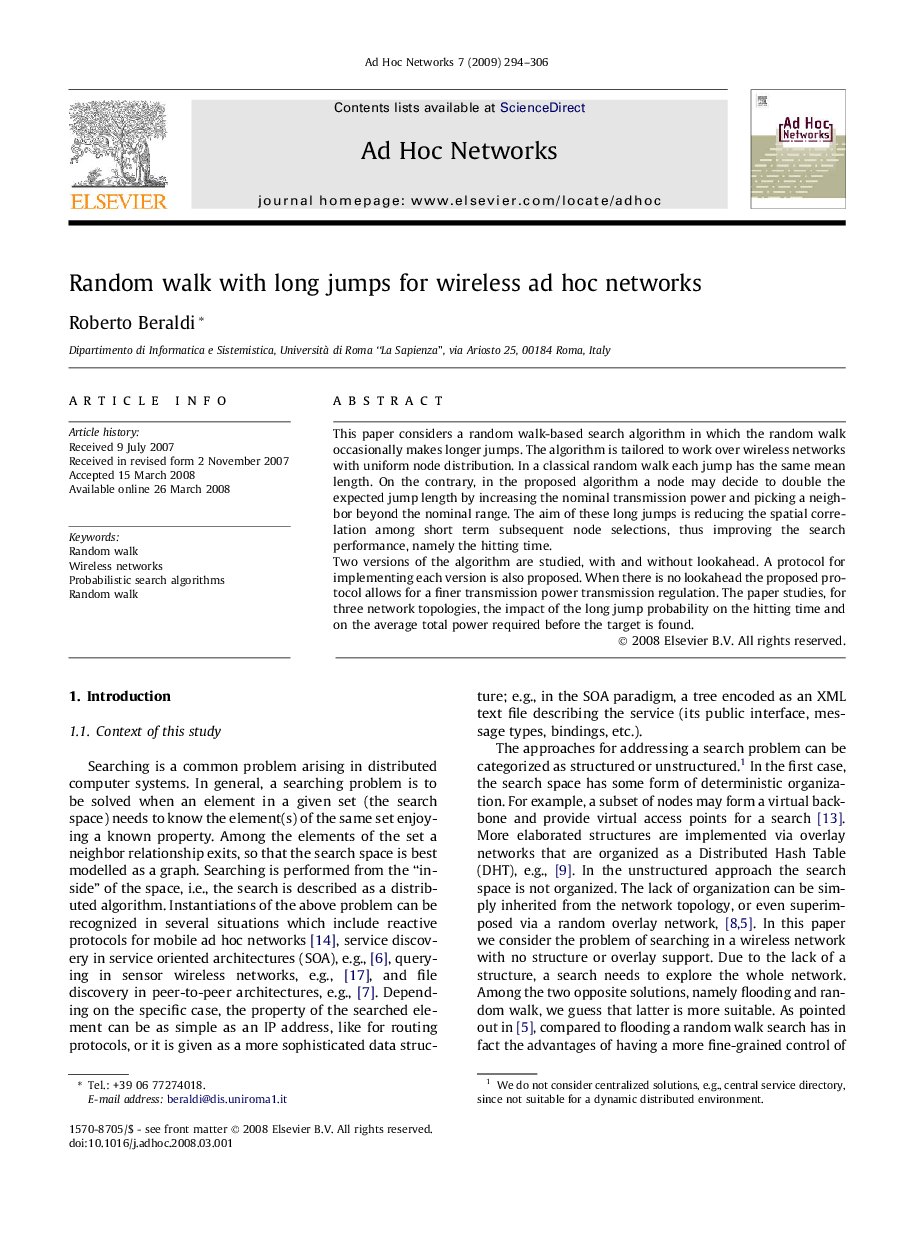| Article ID | Journal | Published Year | Pages | File Type |
|---|---|---|---|---|
| 446448 | Ad Hoc Networks | 2009 | 13 Pages |
This paper considers a random walk-based search algorithm in which the random walk occasionally makes longer jumps. The algorithm is tailored to work over wireless networks with uniform node distribution. In a classical random walk each jump has the same mean length. On the contrary, in the proposed algorithm a node may decide to double the expected jump length by increasing the nominal transmission power and picking a neighbor beyond the nominal range. The aim of these long jumps is reducing the spatial correlation among short term subsequent node selections, thus improving the search performance, namely the hitting time.Two versions of the algorithm are studied, with and without lookahead. A protocol for implementing each version is also proposed. When there is no lookahead the proposed protocol allows for a finer transmission power transmission regulation. The paper studies, for three network topologies, the impact of the long jump probability on the hitting time and on the average total power required before the target is found.
